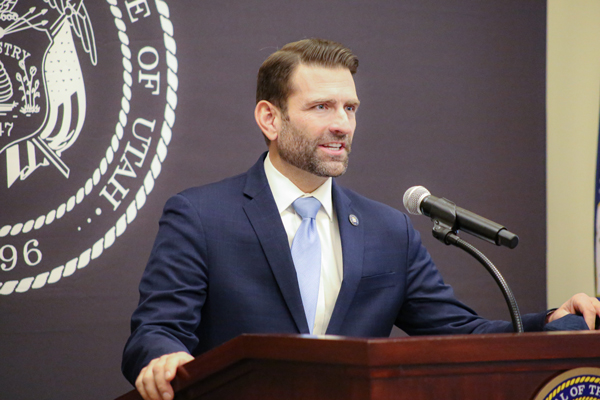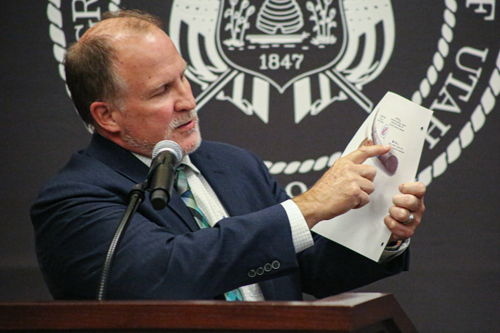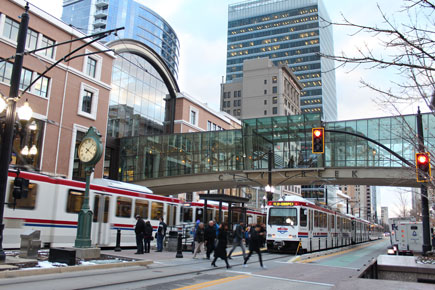
Nov. 10, 2020
By DEQ Communications
After a rigorous evaluation of air monitoring data and Utah’s detailed plan to continue to meet federal air quality standards, the U.S. Environmental Protection Agency (EPA) announced on Tuesday, Nov. 10, its intent to redesignate the Salt Lake City and Provo “non-attainment” areas to “attainment” for the 2006 24-hour fine particulate matter (PM2.5) National Ambient Air Quality Standard (NAAQS) under the Clean Air Act. The Provo area includes Utah County, while the Salt Lake City area covers portions of Weber, Davis, Box Elder and Tooele counties.
The Utah Department of Environmental Quality’s (DEQ) Division of Air Quality (DAQ), state and local officials have worked collaboratively for nearly a decade to develop effective plans to reduce emissions and improve Northern Utah air quality.
UTAH’S PROGRESS

Over the past two decades, and even more so within the past 10 years, Utah has seen significant reductions in statewide air emissions. These reductions have come from industry efforts, government programs, and most importantly, the actions of individual residents.
- From 2002 to 2017, Utah’s population grew by 34%. At that same time, total statewide air emissions were reduced by 27.3%-45.7% per-capita.
- Large industries have reduced air pollutant emissions by 12% between 2017 and 2019. This represents 9,000 fewer tons of particulate matter, sulfur dioxide, oxides of nitrogen, volatile organic compounds, carbon monoxide, and ammonia in Utah’s atmosphere. This trend was even more pronounced along the Wasatch Front, where criteria pollutants decreased by 19% from 2017 to 2019 (almost 3,000 tons).
- In Feb. 2020, the EPA redesignated three Wasatch Front areas to attainment of the coarse particulate matter (PM10) standard.
- In Sept. 2019, EPA formally determined that two PM2.5 nonattainment areas, Provo and Salt Lake City, met the fine particulate standard for three years running. Average concentrations of fine particulate were reduced to 30 micrograms per cubic meter. This determination was the precursor to the proposed redesignation.

WHAT’S NEXT?
As a state, our work isn’t done. The winter inversions that occur after a snowstorm will continue to pose risks to air quality in Northern Utah. A typical Utah winter sees about five to six multi-day inversion episodes on average. During these multi-day inversions, Utah may exceed federal PM2.5 air quality standards. A strong storm or low-pressure system is often needed to clear out these inversions.
If redesignation is approved, Utah will be under maintenance plans for at least 10 years. These maintenance plans will require Northern Utah to continue to take steps to ensure that emissions do not, again, reach levels that place it in non-attainment. For this reason, Utah residents should continue to do their part to improve our air quality by taking fewer trips by car and driving cleaner vehicles, switching to gas-fueled fireplaces or stoves, turning the thermostat down, and using battery-powered tools.
STAYING THE COURSE
While the attainment of federal PM2.5 air quality standards is a major milestone for our state, Utah will need to continue its air quality improvement efforts to ensure that it continues to meet these standards.
To help residents plan ahead and adjust their activities to combat poor air quality, DAQ meteorologists issue Action Alerts and Health Guidance each day:
Action Alerts: Notify the public of the actions needed to combat current pollution levels. Three basic symbols are used to indicate unrestricted, voluntary and mandatory actions.
- Unrestricted Action (symbol = ● ): Wood and coal burning stoves or fireplaces may be used, but please use them in a proper manner to reduce smoke emissions.
- Voluntary Action (symbol = ▼)*: Voluntarily do not use wood and coal-burning stoves or fireplaces. Reduce vehicle use by consolidating trips. Industry should optimize operating conditions to minimize air pollution emissions.
- Mandatory Action (symbol = X)*: Wood and coal burning stoves or fireplaces must not be used. Reduce vehicle use by consolidating trips. Industry should optimize operating conditions to minimize air pollution emissions.
*Salt Lake County has implemented mandatory burn restrictions on days when DAQ is calling for voluntary action.
Health Guidance: Helps determine how the highest pollution level of the day will affect human health. These are the green, yellow, orange or red ratings based on how much PM2.5 pollution is currently in the air.
Each of us plays a part in protecting human health from the effects of air pollution. Working together, Utah residents have improved air quality and continue to make Utah a great place to work and live. Check out the following resources to learn more about ways you can cut emissions.
- DAQ Air Quality Forecasts: On the web at air.utah.gov, or by calling (800) 228-5434
- UtahAir App: Download the UtahAir app (free on IOS and Android) to receive air quality alerts
- Utah Clean Air Partnership (UCAIR): Visit ucair.org for simple actions you can take to clear the air
- TravelWise: Visit travelwise.utah.gov to view their TravelWise trip tracker
